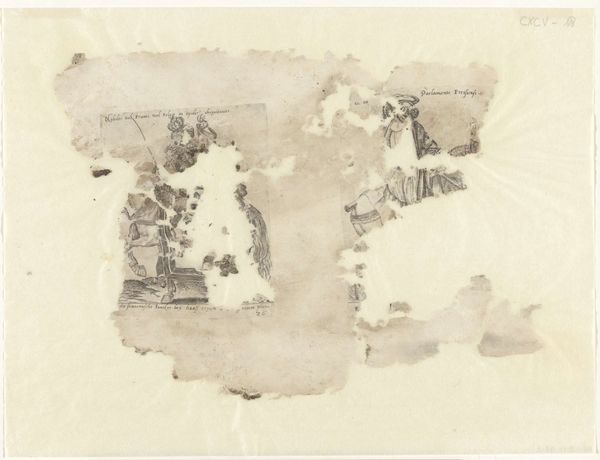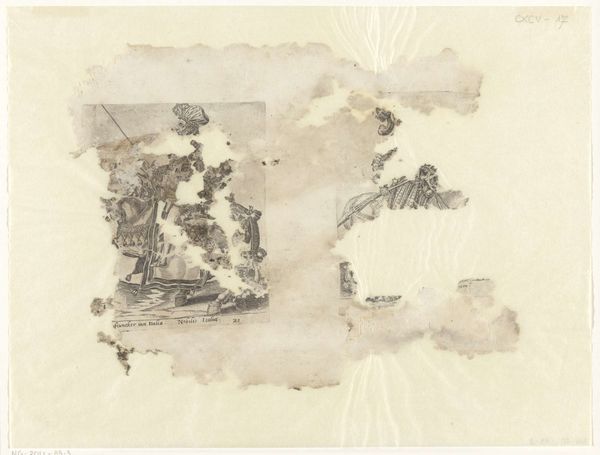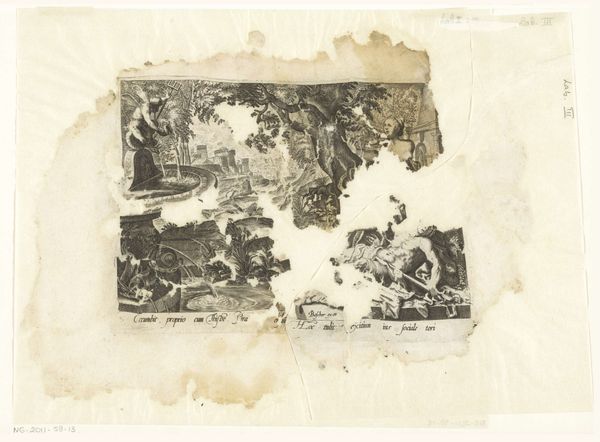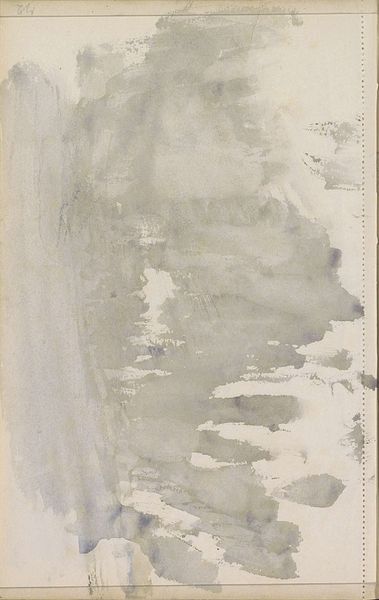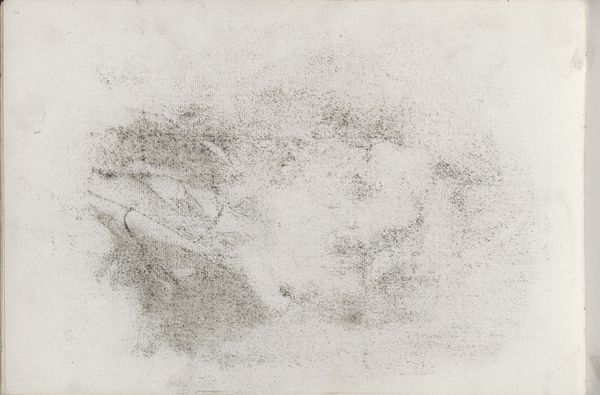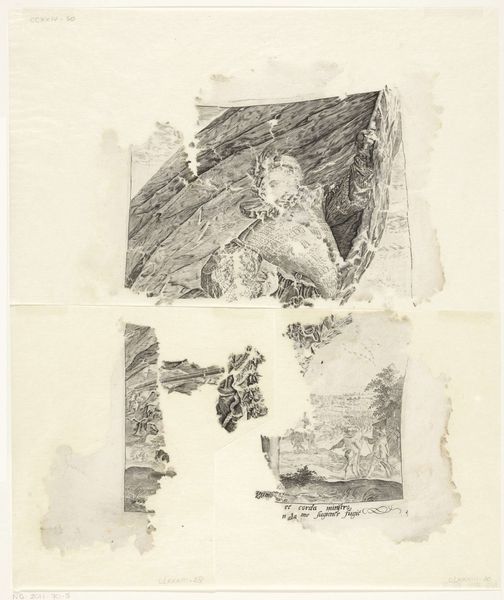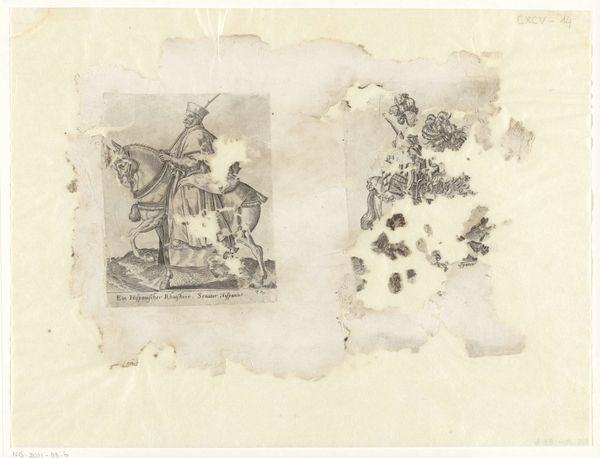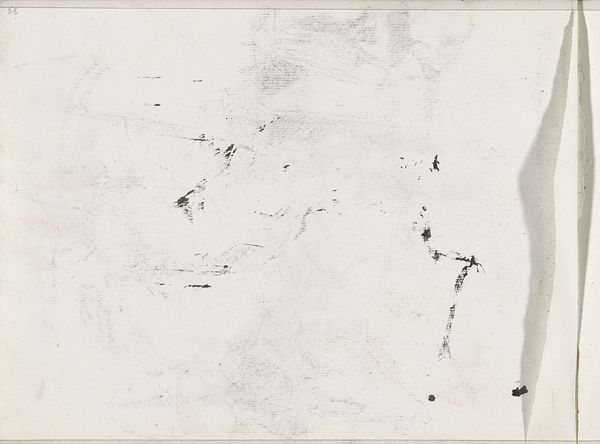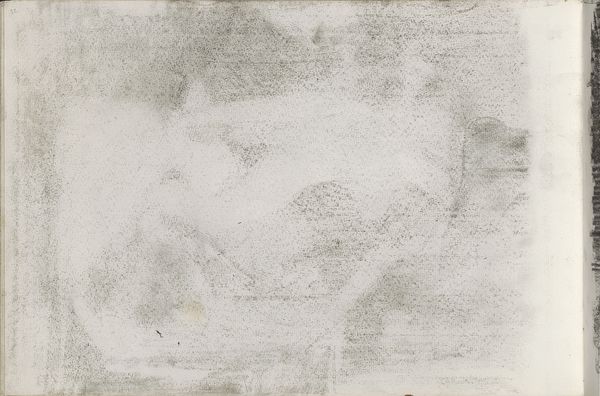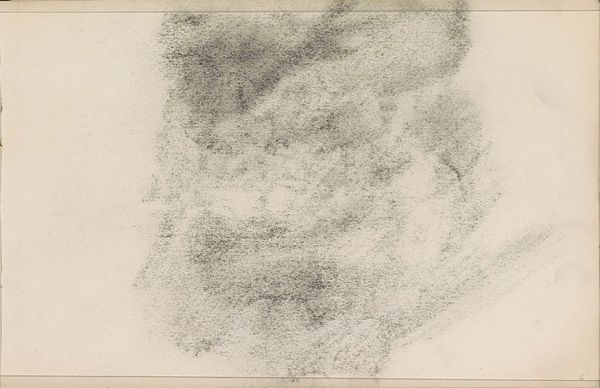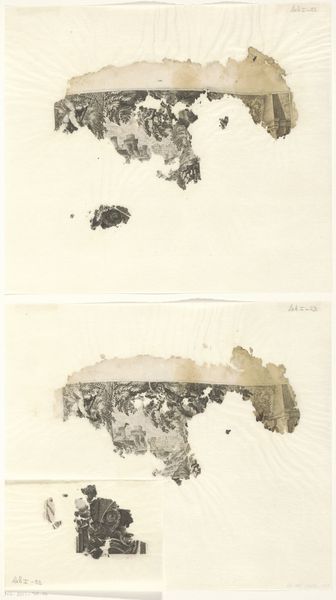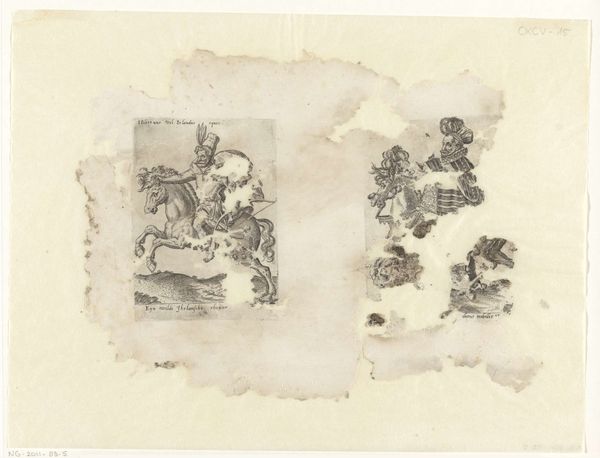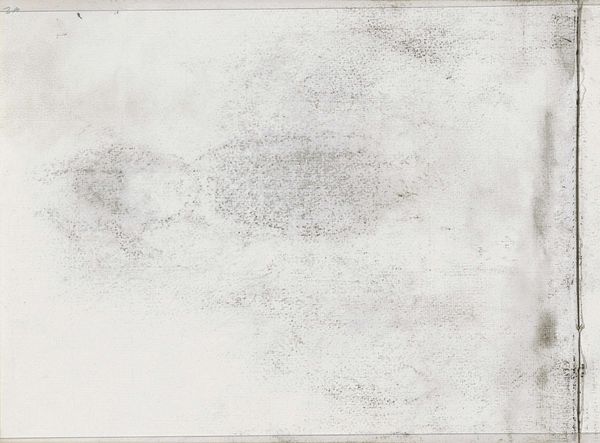
drawing, print, paper, watercolor, ink
#
drawing
# print
#
pencil sketch
#
paper
#
11_renaissance
#
watercolor
#
ink
#
history-painting
#
watercolor
Dimensions: height 232 mm, width 310 mm
Copyright: Rijks Museum: Open Domain
Editor: So, this is "Franse ruiter en lansier" by Abraham de Bruyn, made somewhere between 1576 and 1596. It looks like ink and watercolor on paper – a drawing and print combo at the Rijksmuseum. It's interesting how fragmented it appears; almost like we are looking at salvaged remnants. How would you approach an interpretation of this artwork? Curator: I'm immediately drawn to the material properties of the piece. Look at the paper itself - its texture, the way it's aged, stained. Consider the social conditions behind the making of this print. De Bruyn’s workshop likely employed apprentices, engaging a division of labor we often overlook when ascribing artistic genius to a single author. Can we separate the high art designation of a "history painting" from the realities of its physical creation and broader dissemination as a print? Editor: That's a really interesting perspective! I wouldn’t have immediately thought about the labor involved beyond the artist's hand. Do the subjects—the French rider and lancer—play into your materialist reading? Curator: Absolutely. These aren't simply noble figures. Consider their gear: the manufacturing processes, the materials sourced from different locales. What does the depiction of military might tell us about consumption and production in the late 16th century? This isn't just a picture of a rider, it is also a record of material culture that needs to be examined under production circumstances and socio-political forces. Editor: That's fascinating. So, by focusing on the materials and how they were produced and distributed, we get a totally different understanding of the piece. I definitely learned a new perspective on how to look at art today. Curator: Indeed. By acknowledging materiality and modes of production we move beyond simply aesthetic considerations toward a more comprehensive historical understanding.
Comments
No comments
Be the first to comment and join the conversation on the ultimate creative platform.
